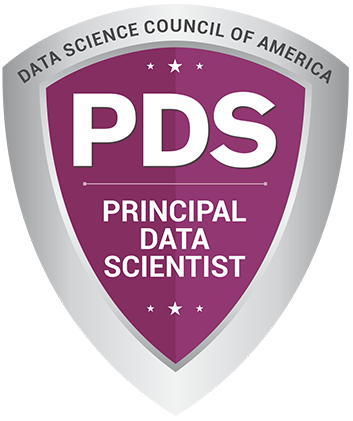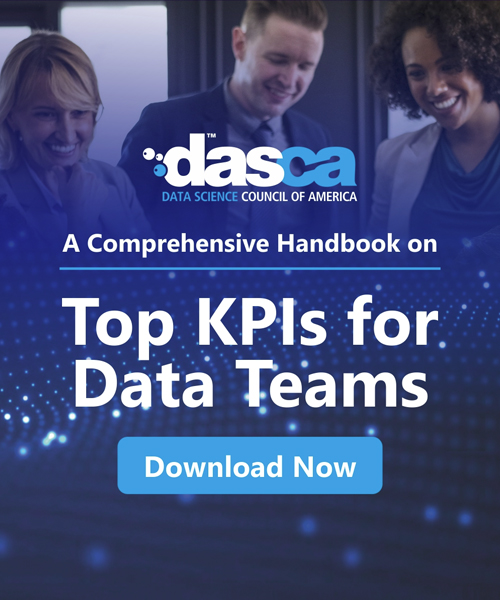
About the Author
In today's hyper-competitive business environment, traditional customer acquisition strategies are no longer sufficient. The integration of Artificial Intelligence (AI) and Machine Learning (ML) is revolutionizing how businesses identify, engage, and convert potential customers. These technologies enable organizations to process massive datasets, uncover actionable insights, forecast behaviors, and deliver hyper-personalized experiences at scale.
This article explores the transformative impact of AI-driven customer acquisition strategies, delving into cutting-edge techniques, implementation challenges, real-world examples, and future trends. By understanding these aspects, businesses can craft effective, sustainable acquisition models that deliver long-term growth.
The Role of AI in Customer Acquisition
AI and ML technologies transform customer acquisition by enabling:
- Scalable Data Analysis: Analyzing petabytes of structured and unstructured data to identify actionable insights.
- Behavioral Predictions: Leveraging historical data to forecast customer preferences and actions.
- Hyper-Personalization: Delivering highly tailored customer interactions for improved engagement and conversion.
- Operational Efficiency: Automating resource-intensive tasks like lead qualification, saving costs while enhancing precision.
AI-driven customer acquisition follows a structured lifecycle comprising data integration, feature engineering, algorithm selection, model evaluation, deployment, and optimization.
Advanced Machine Learning Strategies for Customer Acquisition
1. Data Integration and Pre-processing
Effective AI models rely on high-quality data:
- Data Collection: Aggregate data from diverse channels—CRM, IoT devices, web analytics, and social platforms.
- Real-Time Ingestion: Implement tools like Apache Kafka or Google Cloud Pub/Sub to collect and process real-time data streams.
- Data Cleaning: Apply anomaly detection, missing value imputation, and outlier handling techniques.
- Data Augmentation: Enrich datasets with external information, such as weather, demographics, or economic indicators.
- Data Privacy: Ensure compliance with GDPR and CCPA through secure data handling and anonymization techniques.
2. Feature Engineering and Transformation
Feature engineering enhances model accuracy and predictive power:
- Automated Feature Generation: Use AI-driven tools like FeatureTools for scalable feature creation.
- Text Feature Extraction: Implement NLP techniques such as TF-IDF or BERT embeddings to process unstructured text data.
- Handling Imbalanced Data: Use oversampling (e.g., SMOTE) or under sampling to balance class distributions.
- Time-Series Feature Engineering: Derive cyclical features like hour, day, and season to capture temporal patterns.
3. Algorithm Selection and Model Training
Choosing the right algorithm is crucial for optimal performance:
- Classification Models:Utilize algorithms like XGBoost or CatBoost for high-performance customer segmentation.
- Reinforcement Learning:Deploy reinforcement learning (RL) agents for dynamic pricing or optimizing ad spend in real time.
- Deep Learning Architectures: Use Transformer-based models for natural language understanding and personalized recommendations.
- Federated Learning: Build privacy-preserving models by training on decentralized data sources.
4. Model Evaluation and Validation
Robust evaluation frameworks ensure model reliability:
- Multi-Faceted Metrics: Employ precision, recall, F1-score, and AUC-ROC for classification tasks.
- Custom KPIs: Tailor evaluation metrics like Customer Acquisition Cost (CAC) per predicted Lifetime Value (CLV).
- Explainability Tools: Integrate methods like SHAP or LIME to provide interpretability for complex models.
- Stress Testing: Validate models under various scenarios to measure robustness and adaptability.
5. Deployment and Monitoring
Scalable and adaptive deployment ensures consistent results:
- Serverless Deployment: Leverage AWS Lambda or Google Cloud Run to simplify infrastructure management.
- Monitoring and Drift Detection: Use frameworks like Alibi Detect to identify data and concept drift in real-time.
- Model Optimization Pipelines: Automate retraining workflows using platforms like MLflow or Kubeflow.
Emerging Use Cases in AI-Driven Customer Acquisition
A. Real-Time Lead Prioritization
Objective: Prioritize high-value leads for immediate follow-up, enabling sales teams to focus their efforts on prospects most likely to convert.
Approach:
-
1.Data Aggregation:
- Collect behavioral and transactional data from diverse sources, such as website interactions, social media engagements, CRM platforms, and e-commerce transactions, in real-time using tools like Snowpark or Apache Kafka.
- Incorporate third-party datasets, including demographic profiles, purchasing power indices, and psychographic data, for enriched lead profiling.
-
2.Feature Engineering:
- Derive key features such as lead engagement scores, frequency of interactions, and time since last interaction.
- Generate temporal features like time-of-day activity patterns to understand when a lead is most responsive.
-
3.Modeling with LightGBM:
- Train predictive models like LightGBM, which excels in handling large datasets with high dimensionality, to score leads in real-time.
- Implement probabilistic scoring to rank leads based on conversion likelihood.
-
4.Actionable Insights for Sales Teams:
- Provide real-time dashboards integrated with CRM systems to alert sales representatives about high-priority leads.
- Use predictive insights to suggest tailored outreach strategies, such as sending an email, scheduling a call, or offering personalized discounts.
Outcome:
- Enhanced Conversion Rates: By focusing on high-potential leads, sales teams can achieve faster turnaround times and improved efficiency.
- Optimized Resource Allocation: Limited resources can be strategically directed to opportunities with the highest ROI.
B. Personalization at Scale
Objective: Deliver hyper-personalized marketing campaigns that resonate with individual customer preferences, driving deeper engagement and higher conversion rates.
Approach:
-
1.Dynamic Content Creation with Generative AI:
- Utilize Generative AI models like GPT-4 to create personalized marketing content, including email copy, social media posts, and landing page text, tailored to individual customer preferences.
- Automate content adaptation for different customer personas by analyzing behavioral data such as browsing history and purchase intent.
-
2.Contextual Personalization with Deep Learning:
- Deploy BERT or Transformer-based models to analyze and interpret customer queries, reviews, and feedback in real-time.
- Use this understanding to recommend products, services, or solutions that align with the customer's immediate needs.
-
3.Cross-Channel Integration:
- Synchronize personalized content delivery across multiple touchpoints, including email, push notifications, in-app messages, and social ads, ensuring a seamless customer experience.
- Use customer journey analytics to determine the optimal timing and channel for each communication.
-
4.Feedback Loops for Continuous Improvement:
- Implement AI-based feedback loops to analyze campaign performance and refine personalization strategies iteratively.
- Leverage A/B testing to compare personalized campaigns with generic ones, optimizing for metrics like click-through rates (CTR) and conversion rates.
Outcome:
- Increased Engagement: Hyper-personalized campaigns result in higher customer engagement, as they address specific preferences and needs.
- Improved Retention: Personalized communication fosters stronger customer loyalty by making interactions more meaningful.
C. Maximizing Customer Lifetime Value (CLV)
Objective: Forecast and optimize Customer Lifetime Value (CLV) by identifying opportunities for upselling, cross-selling, and retention.
Approach:
-
1.Forecasting CLV with Regression Models:
- Use ensemble regression techniques like Gradient Boosting Machines or Random Forest Regressors to predict future revenue from individual customers.
- Incorporate features such as purchase frequency, average transaction value, and customer tenure into the models.
-
2.Feature Importance Analysis:
- Apply explainability tools like SHAP to identify key drivers of CLV, such as product categories, seasonal trends, or marketing interactions.
- Use these insights to tailor cross-selling and upselling strategies.
-
3.Strategic Engagement Plans:
- Develop personalized offers, loyalty rewards, and subscription plans targeting high-value customers.
- Implement dynamic pricing strategies to maximize value without alienating price-sensitive segments.
-
4.Churn Risk Mitigation:
- Combine CLV predictions with churn probability models to proactively engage high-value customers at risk of attrition.
- Offer retention incentives such as exclusive discounts, early access to new products, or premium customer support.
Outcome:
- Higher Revenue: By extending the value of existing customer relationships, businesses can achieve significant revenue growth without increasing acquisition costs.
- Enhanced Customer Experience: Tailored strategies make customers feel valued, improving satisfaction and loyalty.
D. Churn Reduction
Objective: Predict and prevent customer churn through proactive retention strategies.
Approach:
-
1.Identifying At-Risk Customers:
- Use ensemble models like Random Forests or XGBoost to identify customers showing signs of disengagement, such as reduced activity or negative feedback.
- Incorporate additional churn indicators like delayed payments, frequent complaints, or declined interactions.
-
2.Predictive Features and Segmentation:
- Engineer features such as customer sentiment scores, time since last purchase, and decline in usage patterns to enhance churn predictions.
- Segment customers based on churn likelihood and CLV to prioritize retention efforts.
-
3.Targeted Retention Campaigns:
- Design personalized retention strategies, such as exclusive offers, customized outreach, or tailored communication addressing specific customer concerns.
- Use reinforcement learning to optimize retention strategies dynamically, adapting based on campaign outcomes.
-
4.Continuous Monitoring and Feedback:
- Set up dashboards to track churn metrics and customer sentiment in real-time.
- Use feedback from retention campaigns to refine models and improve future outreach.
Outcome:
- Reduced Churn Rates: Proactive engagement helps retain valuable customers, minimizing revenue loss.
- Improved Customer Loyalty: Addressing pain points strengthens trust and satisfaction, encouraging long-term relationships.
Enhancing Predictive and Segmentation Models
Managing multiple models effectively requires a robust framework:
- Model Orchestration: Use tools like Apache Airflow to automate pipeline execution.
- Scalability: Optimize performance using distributed systems like Apache Spark.
- Performance Audits: Conduct periodic evaluations to address model drift and ensure accuracy.
- Version Control: Maintain versioning for reproducibility and traceability.
Advanced Tools and Platforms for AI-Driven Strategies
1. Snowpark
- Functionality: Supports in-database processing for efficient ML workflows.
- Use Case: Ideal for real-time analytics and feature engineering.
2. Databricks
- Functionality: Unified platform for big data and AI.
- Advantages: Seamless integration with Spark for large-scale data processing.
3. Dataiku
- Functionality: Simplifies AI deployment with no-code and low-code capabilities.
- Use Case: Democratizes AI for non-technical stakeholders.
4. Amazon SageMaker
- Functionality: End-to-end ML service for building and deploying models.
- Advantages: Offers pre-built algorithms and scalable infrastructure.
Real-World Examples of AI-Driven Transformation
1. Improving Targeting Accuracy in Insurance
- Challenge: Incorrect industry classifications led to inaccurate pricing.
- Solution: Leveraged NLP to extract insights from underwriting reports.
- Impact: Improved pricing models and targeting accuracy.
2. Strengthening Fraud Detection in Finance
- Challenge: High false-positive rates in fraud detection systems.
- Solution: Balanced datasets using SMOTE. Enhanced feature selection and optimized models.
- Impact: Reduced false positives and built customer trust.
Best Practices in AI-Driven Customer Acquisition
-
Data Governance and Quality
- Implement policies for data management and periodic audits.
- Enrich datasets with third-party sources for comprehensive insights.
-
Model Transparency
- Use interpretable models or apply explainability techniques to build trust.
-
Ethics and Privacy
- Regularly test for bias in models.
- Ensure compliance with global privacy regulations.
-
Cross-Functional Collaboration
- Foster a culture of collaboration among marketing, sales, and data science teams.
-
Continuous Optimization
- Incorporate active learning techniques to improve model adaptability.
- Stay updated with advancements in technologies like self-supervised learning.
Future Trends in AI and Customer Acquisition
- Real-Time Analytics - Integration of streaming analytics for dynamic decision-making.
- Predictive Segmentation - Advanced clustering techniques to anticipate customer segment shifts.
- AI-IoT Synergy - Leveraging IoT data for enriched customer insights.
- Responsible AI - Adoption of frameworks to ensure fairness and accountability in AI deployment.
Conclusion
AI and machine learning have become indispensable tools for modern customer acquisition strategies. These technologies enable businesses to optimize processes, personalize customer interactions, and achieve unprecedented levels of efficiency and precision. By adopting advanced techniques, ethical practices, and a culture of continuous learning, organizations can transform their acquisition strategies into engines of sustainable growth.
As AI and ML technologies continue to evolve, businesses must remain agile, leveraging emerging trends and tools to meet the changing demands of the marketplace. Success lies in combining technical expertise, strategic foresight, and collaborative efforts across the organization.

































